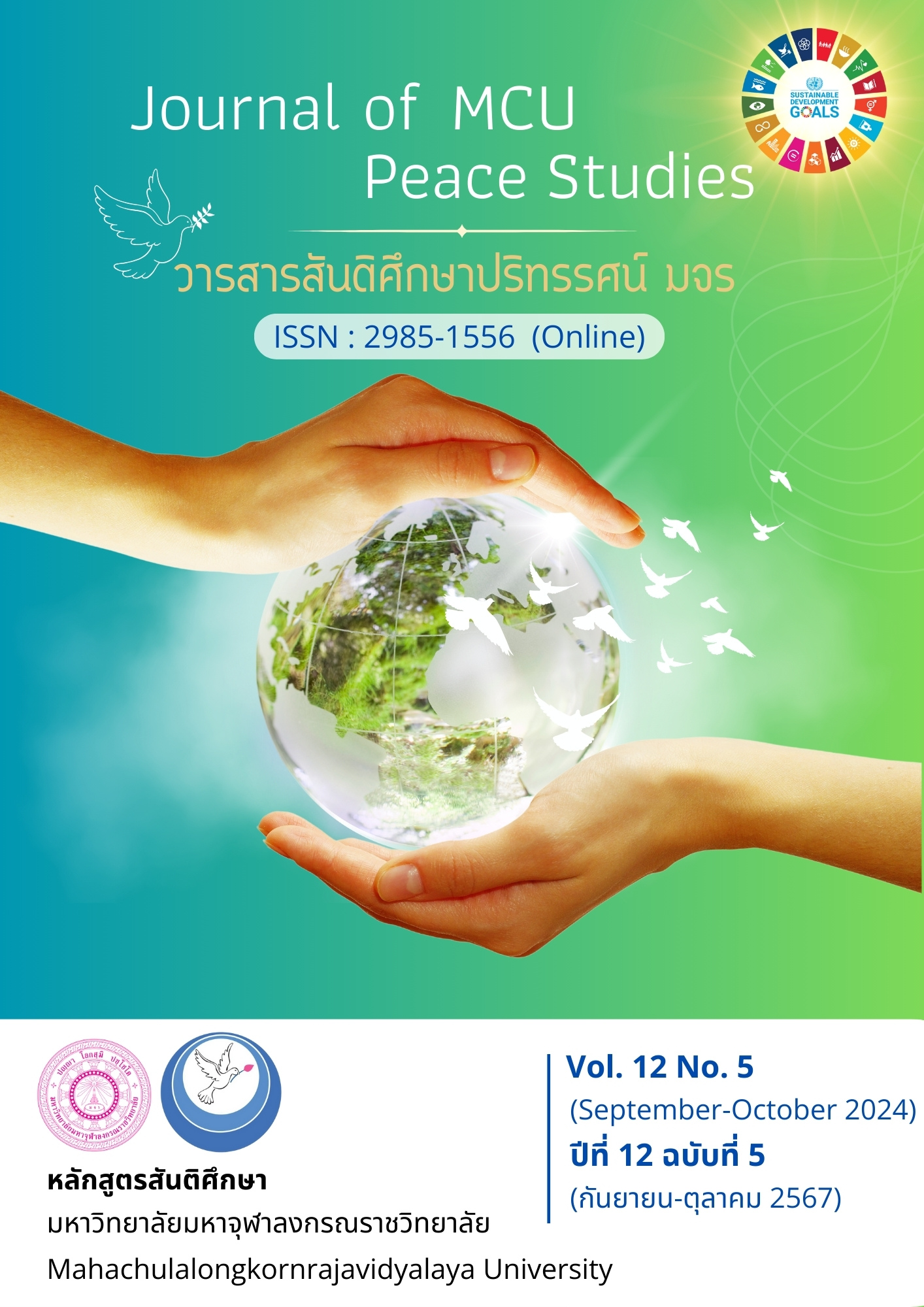Peaceful Innovation: Personality Analysis by Face Decoder for Empowering of the Department of Women’s Affairs and Family Development
Main Article Content
บทคัดย่อ
The objectives of this research article are twofold: first, to examine the problem situation, requirements, theoretical concepts, and Buddhist principles that support the improvement of leadership potential by analyzing personal images through facial coding of leaders in the Department of Women's Affairs and Family Institution; Second, to research and propose innovations in the analysis of personal photos using facial coding in order to strengthen the leadership capacity of To achieve these objectives, a mixed-methods strategy was taken, specifically an exploratory sequential design. This entailed conducting in-depth interviews with 15 heads of units from the Department of Women's Affairs and Family Institution. Holding focus group conversations with 8 specialized experts selected using purposeful sample criteria, conducting experimental training sessions for 24 leaders and networks, and evaluating performance using a leadership potential evaluation. A statistical t-test was performed, along with participant observation and reflective thought.
The research findings revealed that various difficulties at the Department of Women's Affairs and Family Institution must be addressed to increase leadership potential. These include centralized personnel allocation, which causes a mismatch between abilities and tasks, uneven job distribution among leaders, a lack of knowledge of individual differences, and poor leadership communication skills. To overcome these challenges, individuals must engage in self-development, be open to learn, and use their experiences in accordance with current theoretical conceptions. This includes comprehending individual diversity in personal images from Eastern and Western viewpoints, as well as transformative leadership communication and ethics. Furthermore, leadership potential is developed using face coding analysis innovation, which includes a two-day interactive training curriculum and three weeks of leadership development activities. Self-awareness, facial expression decoding for personal image analysis, ethics in leadership communication skill development, usage of facial coding analysis tools (Face Decoder), and leadership for organizational peacebuilding are among the topics covered in the program. The experimental results showed a statistically significant rise in leadership potential enhancement scores using face coding analysis, with the post-experimental mean score significantly higher than the pre-experimental score at a significance threshold of 0.05 (t = -6.57). As a result of the study, the G.R.A.C.E LEADERSHIP COMMUNICATION MODEL and the T.C.P Model were identified as valuable insights for improving leadership communication and competency.
Article Details

อนุญาตภายใต้เงื่อนไข Creative Commons Attribution-NonCommercial-NoDerivatives 4.0 International License.
ทัศนะและความคิดเห็นที่ปรากฏในบทความในวารสาร ถือเป็นความรับผิดชอบของผู้เขียนบทความนั้น และไม่ถือเป็นทัศนะและความรับผิดชอบของกองบรรณาธิการ ยินยอมว่าบทความเป็นลิขสิทธิ์ของวารสาร
เอกสารอ้างอิง
Bass, B. M., & Avolio, B. J. (1994). Improving Organizational Effectiveness through Transformational Leadership. Thousand Oaks, CA: Sage Publications.
Phra Bhramagunabhorn (P.A. Payutto). (2016). Buddhist Dictionary Code of Conduct. (27th ed.). Bangkok: Education for Peace of Phra Dhammapitaka Foundation.
Phra Sorapong Paññātarō (Jullapho). (2018). A Study of Personality according to Six Intrinsic Natures of a Perso. Graduate School: Mahachulalongkornrajavidyalaya University. Ayutthaya.
Thomassen, A. O., & Jørgensen, K. M. (2021). John Dewey and Continuing Management Education: Problem-Based Learning for Organizational Sustainability. Journal of Workplace Learning, 33(3), 229-242.
Tidball, B. E., Prabhala, S., & Gallimore, J. (2006). Making Faces: Exploring Perceptions of Personality Based on Emotional Expressions. In Proceedings of the Human Factors and Ergonomics Conference, 50th Annual Meeting, October 16-20 (pp. 885-888). San Francisco.


